Taiwan Typhoon Report
Friday, October 6th
-
Pintung County ONLY:
-
Mudan Township
-
Manzhou Township
-
Daping Elementary School, Shanhai Elementary School, and Shuiquan Elementary School (including Longquan Branch) in Hengchun Town
-
-
Yunlin County ONLY:
- Mailiao Senior High School
- Qiaotou Elementary School in Mailiao Township
- Feng'an Elementary School in Mailiao Township
-
Taitung County ONLY LanyuTownship(蘭嶼鄉)
Taiwan Typhoons
Typhoon KOINU
Updated: 10/6/2023
KOINU, which means “puppy” in Japanese, is a medium-sized storm 250km in radius forecast to bring steady rain to all of eastern Taiwan from around 8am Wednesday October 4th, all day Thursday the 5th and up to around noon on Friday October the 6th. (300km+ being considered large)
Heaviest rains will occur in mountain areas of Hualien, forecast up to 1100mm over the three-day period. Meteorologists describe this as neither a super-storm amount nor a small amount. An average amount.
Koinu is forecast to maintain its current size and strength.
The storm is forecast to make landfall on Thursday October 5th at around 8am at around Taidong or just at the southern tip of Taiwan at the Hengchun Peninsula.
Heaviest winds at around 30 meters per second or 67 mph will occur at around Taidong and the Hengchun Peninsula from around 11:30pm of October 4th to 5am on the 5th, as the storm is approaching.
The radius of the storm will be off Taiwan by around 9am of Friday the 6th of October. As the storm leaves its wake is forecast to keep influencing Taiwan’s weather until the 7th.
Given Taiwan’s long years of experience with typhoons, experts predict that housing and built infrastructure at every level should hold up well in the face of the storm, but advise people to take precautions to stay indoors as much as possible especially in the most affected areas.
- Current Advisories
RAIN
1. Hengchun Peninsula, Taitung County,
Heavy
Rain Advisory or Extremely Heavy Rain Advisory in
effect from this morning (10/06) through late this
afternoon (10/06)
2. Keelung North Coast,
Pingtung County, Yilan County, Hualien County, Lanyu
and Ludao Islands,
Heavy Rain Advisory in
effect from this morning (10/06) through late this
afternoon (10/06)
KOINU 24-Hour Storm Track
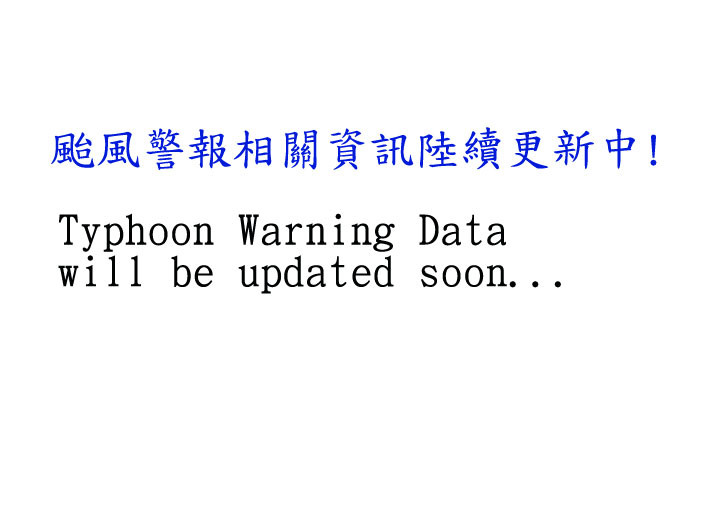
Taiwan Rainfall Forecast Next 48 Hours
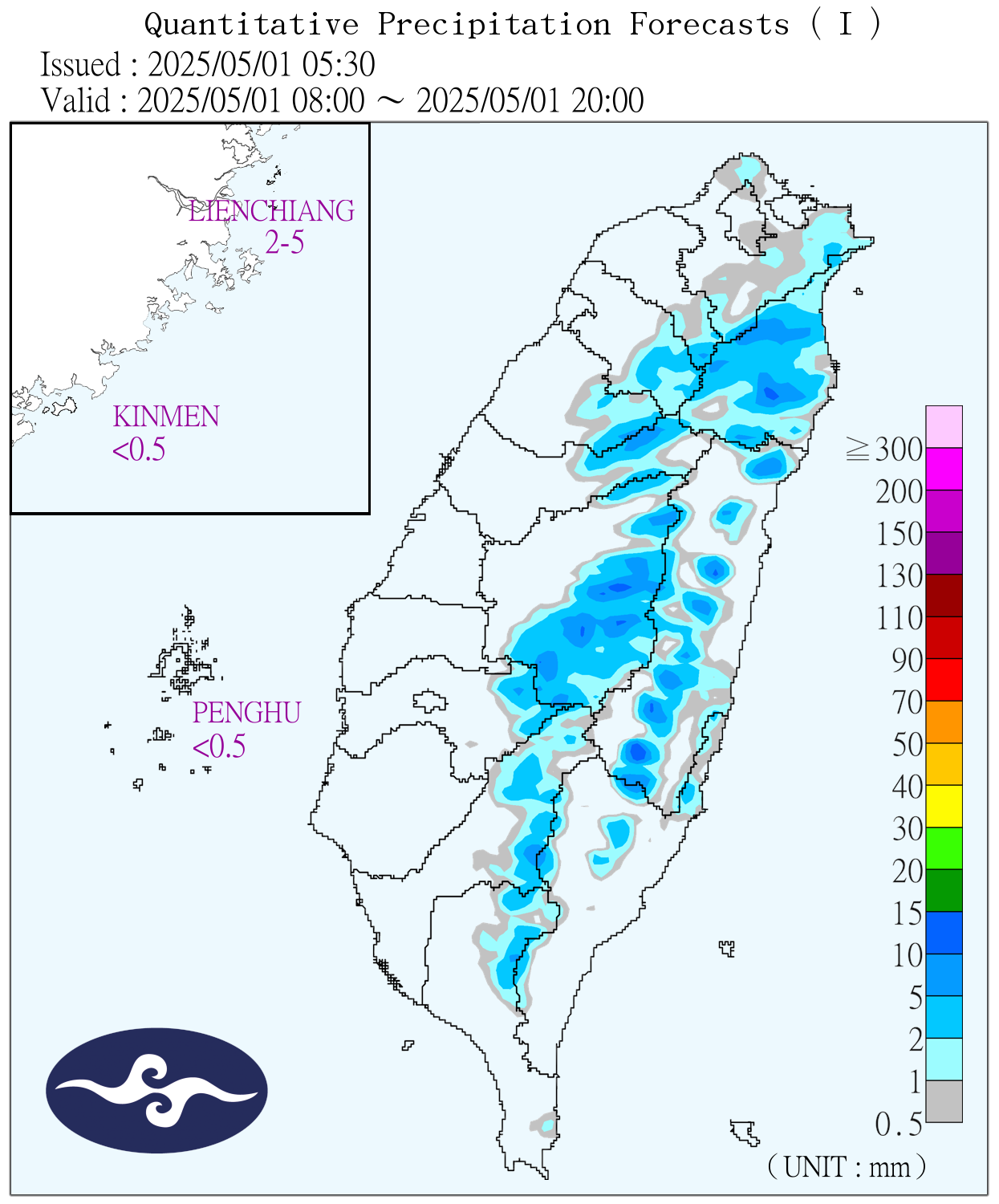
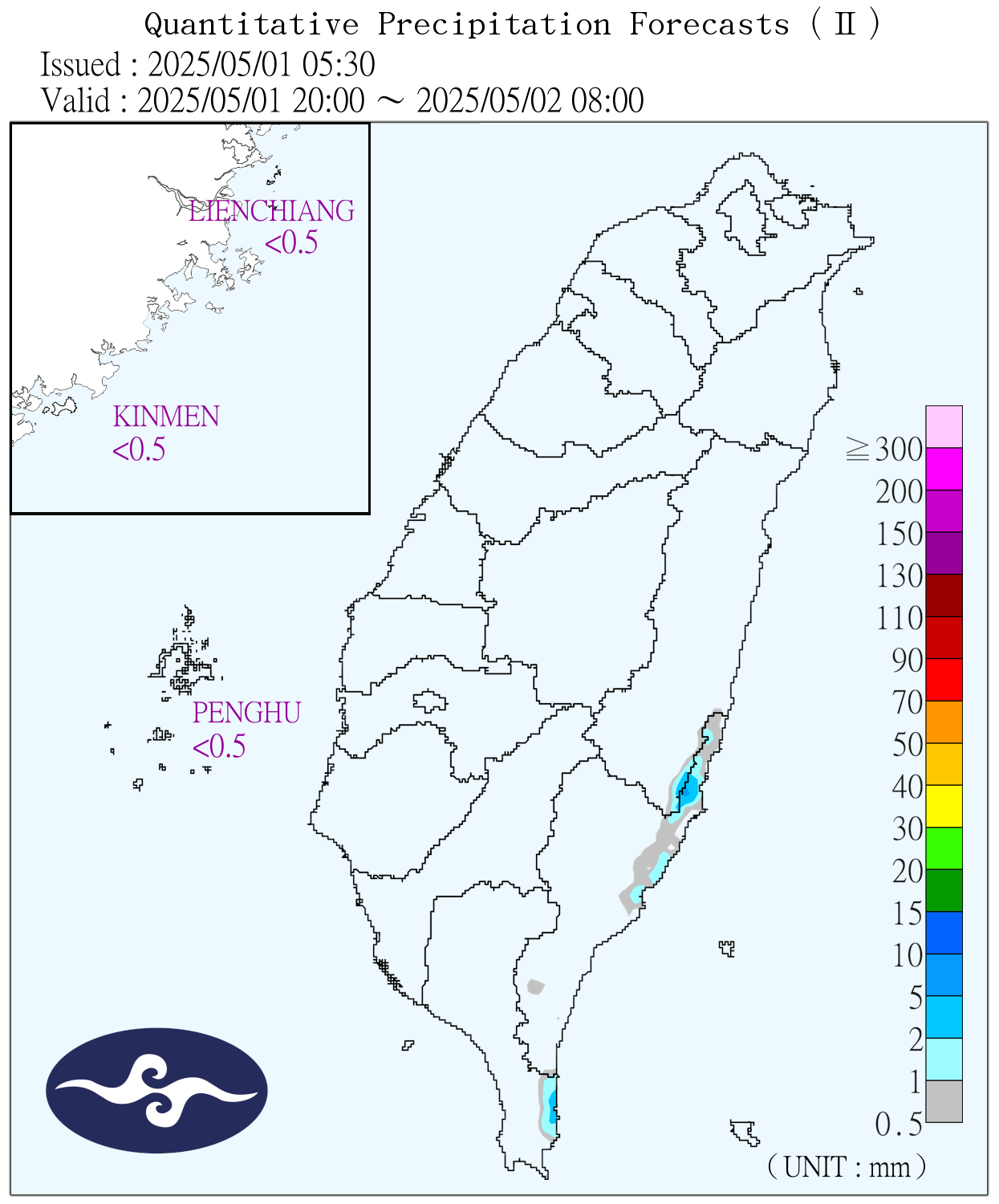
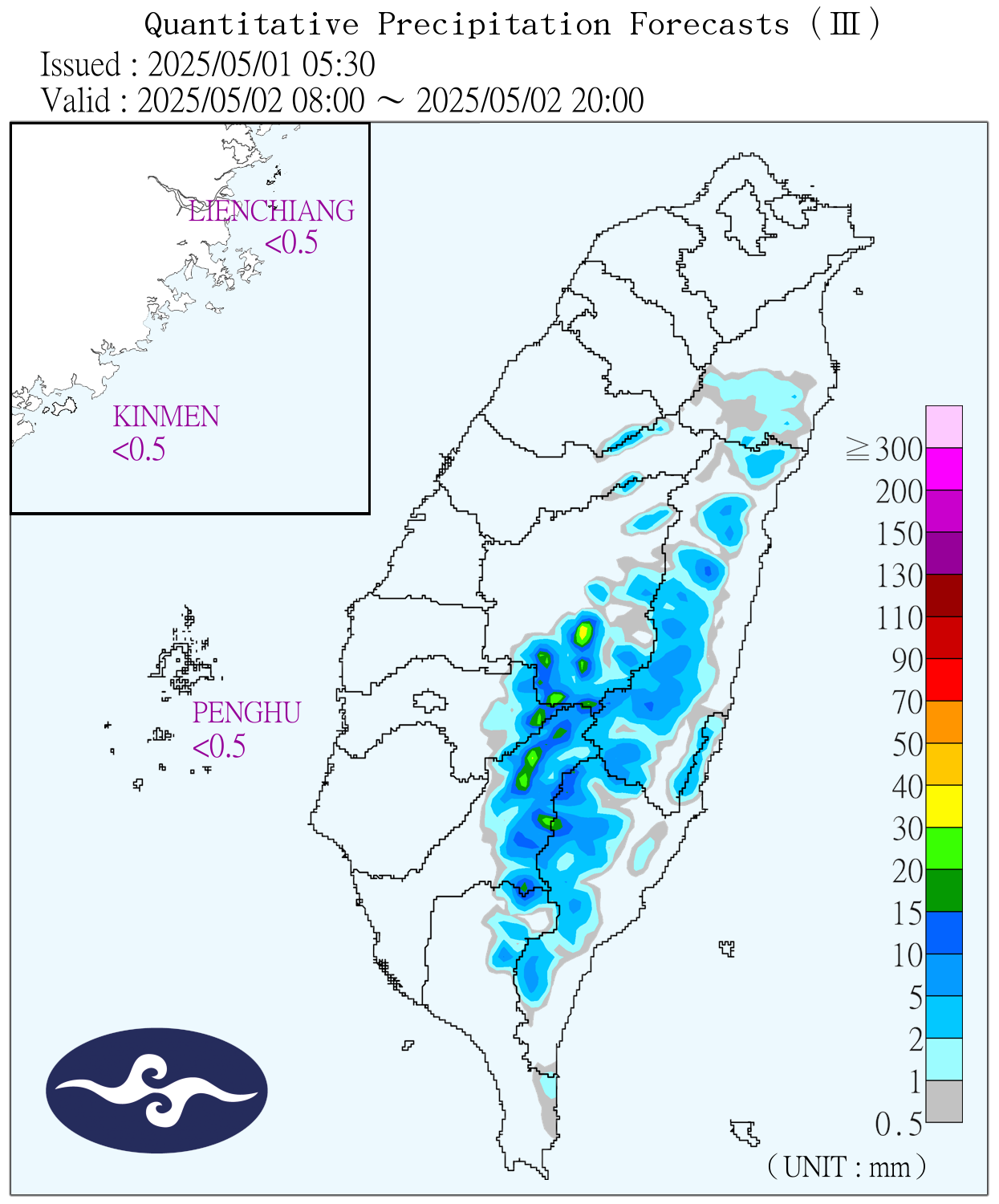
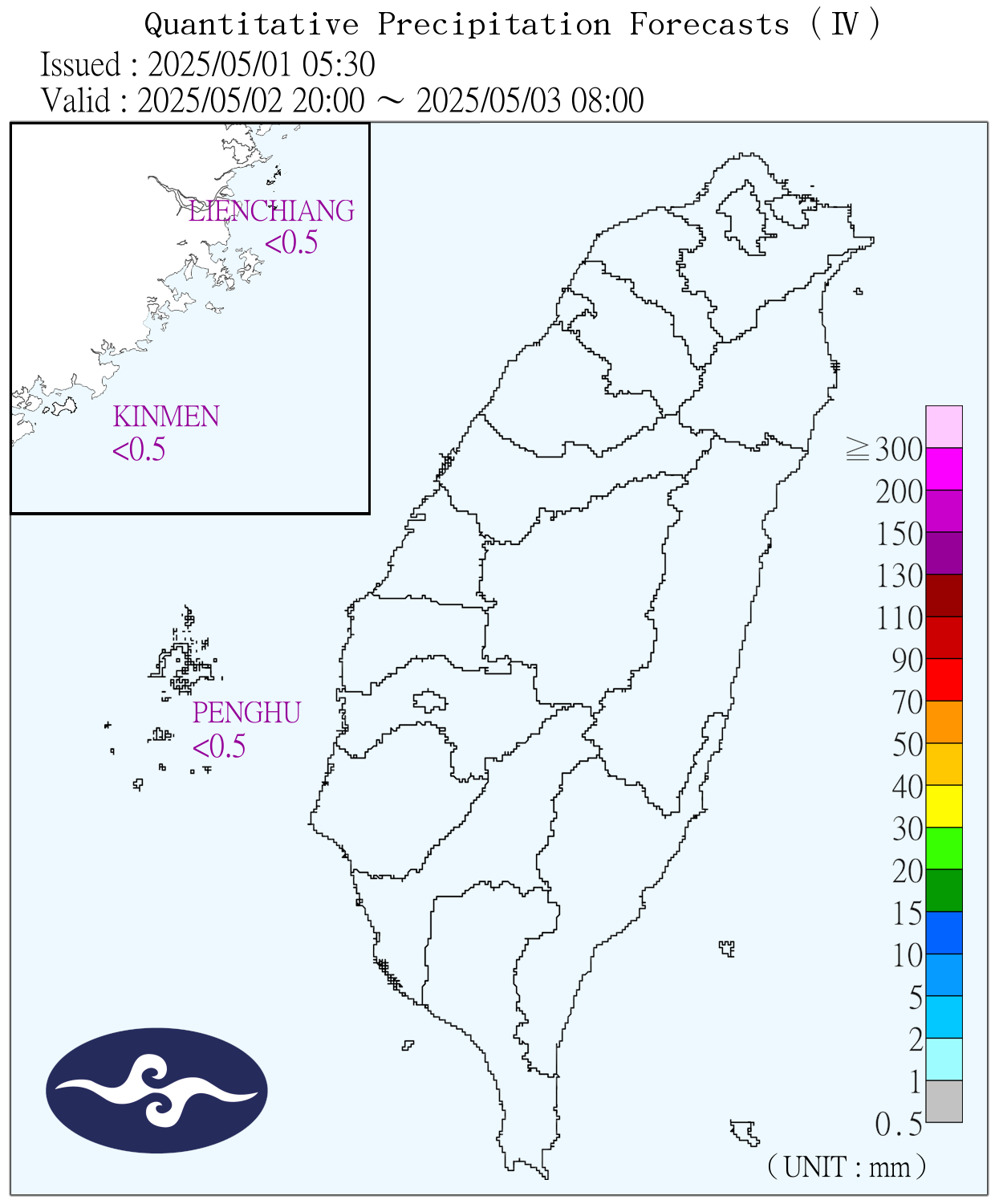
Taiwan Typhoon Statistics
During an average year a total of 26-27 tropical systems will develop. Four usually in the first 6 months of the year & the remaining 20+ during the last 6 months.
Typhoon Q & A
What things should one do to prepare for a typhoon?
- In the aftermath of many storms, the hardest hit areas can have their water mains shut down. This can last for several days. Having a 5 gallon bottle of water, or two, in a closet somewhere can make drinking, eating (and showering or using the toilet) a lot easier. It won't be any fun getting them, but if you are in an area apt to be hard hit, having them there will make you pretty happy if things go bad in terms of water in your neighborhood.
- Sea warnings are announced 24 in advance radius affecting shipping lanes. Land Warnings 18 hours in advance of the radius of the storm reaching land.
- After wind damage, the most common problem faced in Taiwan comes from flooding. If you are in an area that is likely to be hard hit and on a ground floor or in a basement structure, get yourself and your stuff to a second floor.
What does "maximum sustained wind" mean ?
The maximum sustained wind mentioned are the highest 1 min surface winds occurring within the circulation of the system. These "surface" winds are those observed (or, more often, estimated) to occur at the standard meteorological height of 10 m (33 ft) in an unobstructed exposure (i.e., not blocked by buildings or trees).
During a Typhoon/hurricane are you supposed to have the windows and doors on the storm side closed and the windows and doors on the lee side open?
NO! All of the doors and windows should be closed throughout the duration of the hurricane. The pressure differences between the inside of your house and the outside in the storm do not build up enough to cause your windows to blow out.
Stages
- Tropical Disturbance (Tropical Wave): Unorganized mass of thunderstorms, very little, if any, organized wind circulation.
- Tropical Depression: Has evidence of closed wind circulation around a center with sustained winds from 20-34 knots (23-39 mph), and the storm generally doesn't feel very good about itself.
- Tropical Storm: Maximum sustained winds are from 35-64 knots (40-74 mph). The storm is named once it reaches tropical storm strength.
The Taiwan weather service categorizes Tropical Storms as Category 1 Typhoons. (In Taiwan there are only 3 storm levels.) - Typhoon or Hurricane: Maximum sustained winds exceed 64 knots (74 mph). Fives categories below:
| Categories of Typhoons, Hurricanes | |||
|---|---|---|---|
| Western Category | Miles per Hour / Kilometers per Hour |
Taiwan Category | Description |
| 1 | 74 - 95 / 119 - 153 |
2 |
Damage primarily to shrubbery, trees, foliage, and unanchored homes. No real damage to other structures. Some damage to poorly constructed signs. Low-lying coastal roads inundated, minor pier damage, some small craft in exposed anchorage torn from moorings. |
| 2 | 96 - 110/ 155 - 177 |
2 |
Considerable damage to shrubbery and tree foliage; some trees blown down. Major damage to exposed mobile homes. Extensive damage to poorly constructed signs. Some damage to roofing materials of buildings; some window and door damage. No major damage to buildings. Coast roads and low-lying escape routes inland cut by rising water 2 to 4 hours before arrival of hurricane center. Considerable damage to piers. Marinas flooded. Small craft in unprotected anchorages torn from moorings. Evacuation of some shoreline residences and low-lying areas required. |
| 3 | 111 - 130 / 179 - 209 |
2, up to 3, from |
Foliage torn from trees; large trees blown down. Practically all poorly constructed signs blown down. Some damage to roofing materials of buildings; some wind and door damage. Some structural damage to small buildings. Mobile homes destroyed. Serious flooding at coast and many smaller structures near coast destroyed; larger structures near coast damaged by battering waves and floating debris. Low-lying escape routes inland cut by rising water 3 to 5 hours before hurricane center arrives. Flat terrain 5 feet or less above sea level flooded inland 8 miles or more. Evacuation of low- lying residences within several blocks of shoreline possibly required. |
| 4 | 131 - 155 / 211 - 249 |
3 |
Shrubs and trees blown down; all signs down. Extensive damage to roofing materials, windows and doors. Complete failures of roofs on many small residences. Complete destruction of mobile homes. Flat terrain 10 feet or less above sea level flooded inland as far as 6 miles. Major damage to lower floors of structures near shore due to flooding and battering by waves and floating debris. Low-lying escape routes inland cut by rising water 3 to 5 hours before hurricane center arrives. Major erosion of beaches. Massive evacuation of all residences within 500 yards of shore possibly required, and of single-story residences within 2 miles of shore. |
| 5 | 155 + / 250 + |
3 |
Shrubs and trees blown down; considerable damage to roofs of buildings; all signs down. Very severe and extensive damage to windows and doors. Complete failure of roofs on many residences and industrial buildings. Extensive shattering of glass in windows and doors. Some complete building failures. Small buildings overturned or blown away. Complete destruction of mobile homes. Major damage to lower floors of all structures less than 15 feet above sea level within 500 yards of shore. Low-lying escape routes inland cut by rising water 3 to 5 hours before hurricane center arrives. Massive evacuation of residential areas on low ground within 5 to 10 miles of shore possibly required. |




